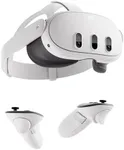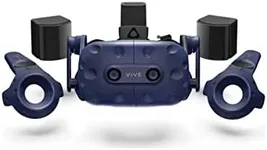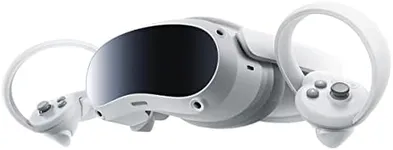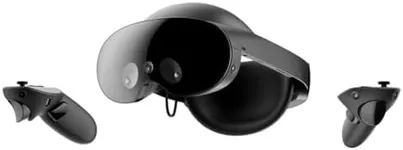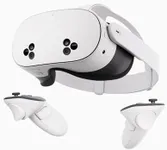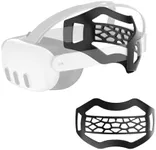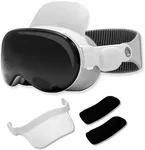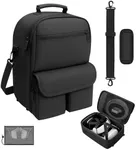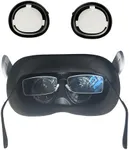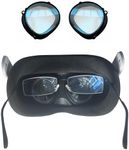Buying Guide for the Best VR headsets
Choosing the right VR headset is about matching your interests and your comfort with the kind of technology you want to use. Whether you're interested in gaming, watching immersive videos, or exploring virtual spaces for work or education, your main focus should be on how comfortable the headset will be for longer sessions, how easily it will connect to your computer or console (if needed), and what you're hoping to experience most often. Always consider where and how you’ll use it—from sitting in your living room to standing and moving around—and check if you’ll need extra equipment like controllers or tracking sensors.Display ResolutionDisplay resolution determines how sharp and clear the image appears inside the headset. Higher resolution means that individual pixels are less noticeable, leading to a more realistic and pleasing image. VR headsets usually list this as pixels per eye, and resolutions range from lower (less sharp, with some noticeable pixelation) to higher (very crisp, almost like looking at a high-quality monitor). If you are prone to noticing blurry images or want to read fine details in virtual spaces, look for higher resolutions. Casual users or those just trying out VR may find lower resolutions acceptable, especially if the experiences they want don't require detailed visuals.
Refresh RateThe refresh rate is how many times per second the image inside the headset updates, measured in hertz (Hz). A higher refresh rate leads to smoother motion and less likelihood of feeling dizzy or nauseated. Typical VR headsets range from 60Hz to 120Hz or more. For most people, anything 90Hz and above feels very smooth, while lower refresh rates can feel a bit choppy during fast movements. If you plan to play fast action games or use VR for long periods, prioritize a higher refresh rate; for slower activities like exploring artwork or watching videos, a lower refresh rate may be fine.
Field of View (FOV)Field of view describes how wide the image appears across your eyes, usually measured in degrees. A wider field of view feels more immersive, like you’re seeing the world around you naturally, while a narrower FOV can feel like looking through binoculars. Standard VR headsets range from about 90 to 120 degrees. If maximum immersion is important, look for a wider FOV. If you’re more focused on simple experiences and don’t mind a slightly boxed-in feel, a narrower FOV is acceptable.
Tracking SystemTracking system refers to how the headset follows your head and hand movements. There are two main types: inside-out tracking (cameras built into the headset) and outside-in tracking (external sensors around your room). Inside-out tracking is easier to set up and more portable, suitable for casual users or those with limited space. Outside-in tracking can be more precise and is favored by enthusiasts who want the best experience, especially in room-scale VR. Choose based on whether you want portability and ease or maximum precision and performance.
Wired vs. WirelessSome VR headsets are completely wireless and self-contained, while others require a wire connecting to a computer or gaming console. Wireless models are more convenient and let you move freely, but may be heavier or have limited processing power. Wired headsets can use more powerful hardware for better graphics but limit your movement with cables. If freedom of movement is crucial—like for active games or exercise—wireless makes sense. If graphic quality matters most and you don’t mind being tethered, a wired solution is better.
Comfort and FitComfort and fit depend on the headset’s weight, the materials used for the face padding and straps, and how easily you can adjust it for your head shape. A lighter, well-padded headset with adjustable straps will be more comfortable for long sessions and for people who wear glasses. If you plan to use VR for extended periods or share it with family members with different head sizes, prioritize comfort and easy adjustment features.
Content CompatibilityNot all VR headsets work with all VR games or apps. Some are limited to certain platforms, like PC, PlayStation, or their own built-in app stores. Check what platform you want to use—do you need it to work with your PC, gaming console, or just on its own? If you’re excited about specific games or apps, make sure the headset you pick supports them.
